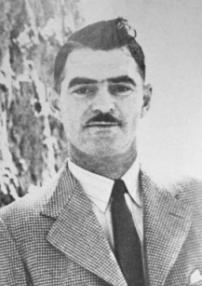The Canadian Mining Hall of Fame was conceived by the late Maurice R. Brown, former editor and publisher of The Northern Miner, as a way to recognize and honour the legendary mine finders and builders of a great Canadian industry. The Hall was established in 1988. For more information about the extraordinary individuals who have been inducted into the Hall of Fame, please go to their home website: http://mininghalloffame.ca/
 Canada’s recent emergence as a centre of excellence for diamond exploration and production owes much to the pioneering efforts of John Williamson, a brilliant geologist from McGill University who discovered, built and operated the highly successful Williamson diamond mine — also known as Mwadui — in Tanganyika (now Tanzania). His efforts to build and operate a diamond mine in remote East Africa, where he spent much of his life from the mid-1930s until his death, are legendary. The mine’s total production from 1941-2008 has been estimated at 20 million carats, with a current value estimated at $3 billion. The mine also created thousands of jobs and a socially progressive town-site known for its amenities.
Canada’s recent emergence as a centre of excellence for diamond exploration and production owes much to the pioneering efforts of John Williamson, a brilliant geologist from McGill University who discovered, built and operated the highly successful Williamson diamond mine — also known as Mwadui — in Tanganyika (now Tanzania). His efforts to build and operate a diamond mine in remote East Africa, where he spent much of his life from the mid-1930s until his death, are legendary. The mine’s total production from 1941-2008 has been estimated at 20 million carats, with a current value estimated at $3 billion. The mine also created thousands of jobs and a socially progressive town-site known for its amenities.
Williamson also left a valuable legacy in Canada, by recruiting and introducing young scientists, notably McGill graduates, to the newly emerging diamond industry. Decades later, they lent their expertise and credibility to help Canada realize its diamond potential.
Born in Montfort, Quebec, Williamson entered Montreal’s McGill University in 1925, intending to study law, but a summer field expedition to Labrador inspired him to switch to geology. He earned his BA, MSc and PhD degrees in geology between 1928 and 1933. After visiting Africa for the first time, he accepted a position with Anglo American in the Copper Belt, but resigned in 1936 to pursue a newfound interest in diamonds. He then joined junior company Tanganyika Gold and Diamonds Ltd. and carried out a diamond prospecting campaign until the company left Tanganyika in 1939.
Williamson stayed behind to continue the hunt through his own private company, Williamson Diamonds Ltd. It was a bold move, as he had few resources other than fierce determination and a theory that systematic prospecting of dolerite dikes associated with kimberlite fields would lead to the discovery of diamond indicator minerals and, ultimately, diamonds.
Williamson was down to his last penny and battling bouts of malaria before his hard work paid off with the discovery of a single diamond in an isolated region called Mwadui. Remarkably, he built his discovery into a mine on his own as well, by selling diamonds as they were mined to buy equipment and finance operations.
Fortunately, the mine produced many fine gems, including a pink 54-carat rough diamond presented to Princess Elizabeth and Prince Philip as a wedding gift in 1947. By 1952, the mine was operating at 10,000 tons per day, with the biggest dragline and longest conveyor belt in Africa. Mwadui was a mining town without equal at the time, built for miners and their families with amenities such as schools, hospital and recreational facilities.
The mine was also a training ground for many young scientists. Williamson relied heavily on Canadian talent to transform his discovery into one of the world’s largest diamond mines. Fortunately for Canada, many of them later returned home to train, mentor and inspire a new
generation of diamond industry professionals.























